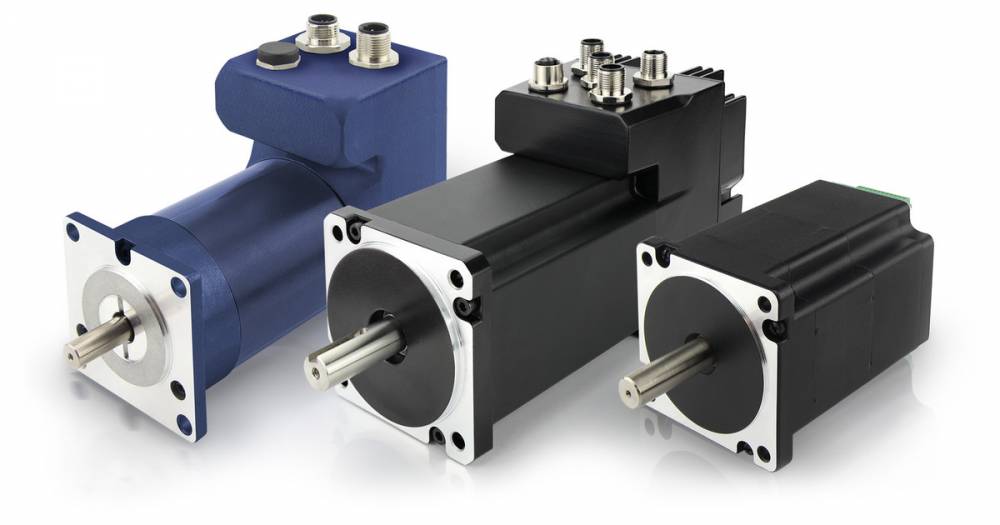
Brushless dc (BLDC) motors are gradually replacing dc motors and ac motors due to their high efficiency, silent operation, small size, reliability, high operating speed, low maintenance and excellent speed torque characteristics. Permanent magnet brushless dc (BLDC) motors have used wide application due to their power density and ease of control. Brushless dc motors in the fractional horsepower range have been used in various types of actuators in advanced aircraft and satellite systems. Most popular brushless DC motors are mainly three phases which are controlled and driven by full bridge transistor circuits. Together with applying permanent magnet excitation, it is necessary to obtain additional torque components. These components can be obtained due to a difference in magnetic permeance in both quadrature and direct axis; therefore, reluctance torque is developed and torque null regions are reduced significantly. In this paper, a brushless DC motor with distributed winding and a special form of PM-rotor with special stator periphery are described, which develop a speed control system for a BLDC motor by closed loop control technique. The proposed system uses a microcontroller of the 8051 family and a rectifiedpower supply. A set of IR transmitter and photodiode are connected to the microcontroller for counting the number of rotations per minute of the DC motor as a speed sensor. Optocoupler is connected to trigger the MOSFET for driving the BLDC motor which is duly interfaced to the microcontroller. The speed control of the BLDC motor is archived by varying the duty cycles (PWM Pulses) from the microcontroller.
TYPES OF CONTROL TECHNIQUE OF BLDC MOTOR
Though various control techniques are discussed, basically two methods are available for controlling BLDC motor. They are sensor control and sensor less control. To control the machine using sensors, the present position of the rotor is required to determine the next commutation interval. Motor can also be controlled by controlling the DC bus rail voltage or by PWM method.
Some designs utilize both to provide high torque at high load and high efficiency at low load. Such hybrid design also allows the control of harmonic current. In case of common DC motors, the brushes automatically come into contact with the commutator of a different coil causing the motor to continue its rotation. But in case of BLDC motors the commutation is done by electronic switches which need the rotor position.
The appropriate stator windings have to be energized when rotor poles align with the stator winding. The BLDC motor can also be driven with predefined commutation interval. But to achieve precise speed control and maximum generated torque, brushless commutation should be done with the knowledge of rotor position. In control methods using sensors, mechanical position sensors, such as a hall sensor, shaft encoder or resolver have been utilized in order to provide rotor position information. Hall Position sensors or simply Hall sensors are widely used and are popular. Whenever the magnetic poles pass near the sensors, they either give a high or low signal, indicating North or South Pole is passing the pole.
The accurate rotor position information is used to generate precise firing commands for power converter. This ensures drive stability and fast dynamic response. The speed feedback is derived from the position sensor output signals.
CONSTRUCTION AND OPERATING PRINCIPLE
Brushless DC motors were developed from conventional brushed DC motors with the availability of solid state power semiconductors. Brushless DC motors are similar to AC synchronous motors. The major difference is that synchronous motors develop a sinusoidal back EMF, as compared to a rectangular, or trapezoidal, back EMF for brushless DC motors. Both have stator created rotating magnetic fields producing torque in a magnetic rotor. A brushless dc motor is turned inside out, so that the field is on the rotor and the armature is on the stator. The brushless dc motor is actually a permanent magnet ac motor whose torque "current characteristics mimic the dc motor.
BLDC MOTOR SPEED CONTROL
Pulse-width modulation (PWM) is a commonly used technique for controlling power to an electrical device, made practical by modern electronic power switches. The average value of voltage (and current) fed to the load is controlled by turning the switch between supply and load on and off at a fast pace. The longer the switch is on compared to the off periods, the higher the power supplied to the load is. The PWM switching frequency has to be much faster than what would affect the load, which is to say the device that uses the power.
The term duty cycle describes the proportion of on time to the regular interval or period of time; a low duty cycle corresponds to low power, because the power is off for most of the time. The main advantage of PWM is that power loss in the switching devices is very low. When a switch is off there is practically no current, and when it is on, there is almost no voltage drop across the switch. Power loss, being the product of voltage and current, is thus in both cases close to zero. PWM works also well with digital controls, which, because of their on/off nature, can easily set the needed duty cycle. The duly cycle determines the speed of the motor. The desired speed can be obtained by changing the duty cycle. The PWM in microcontroller is used to control the duty cycle of DC motor.
CONCLUSION
In this paper the speed of the BLDC motor is being controlled by using microcontroller and it is being made to run at desired speed by using PWM technique. The project can be used for controlling the speed in the SPACE.
Note : Find the best solution for electronics components and technical projects ideas
keep in touch with our social media links as mentioned below
Mifratech websites : https://www.mifratech.com/public/
Mifratech facebook : https://www.facebook.com/mifratech.lab
mifratech instagram : https://www.instagram.com/mifratech/
mifratech twitter account : https://twitter.com/mifratech
Contact for more information : [email protected] / 080-73744810 / 9972364704